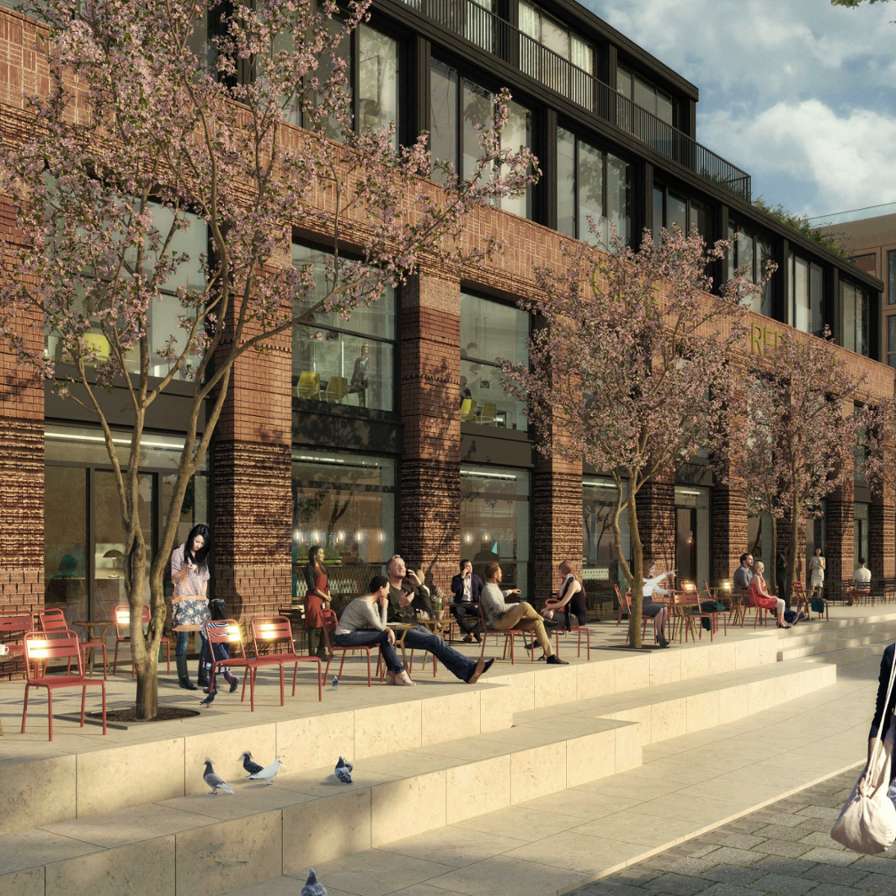ATELIER: energiepositieve wijk in Buiksloterham

Energiepositieve wijken, ook bekend als Positive Energy Districts (PED), zijn een tussenstap in de transitie naar klimaatneutrale steden. Zij produceren meer duurzame energie dan ze gebruiken, in combinatie met andere duurzaamheidsdoelen: een betaalbare, inclusieve en milieuvriendelijke leefomgeving. De Hogeschool van Amsterdam (HvA) doet hier in het internationale project ATELIER onderzoek naar.
Energiepositieve wijk in Buiksloterham
Amsterdam heeft de doelstelling om in de toekomst klimaatneutraal te worden. Daartoe worden innovaties uitgevoerd en getest in de stad, die hieraan kunnen bijdragen. PEDs zijn zo'n veelbelovende innovatie. Amsterdam heeft een Europese subsidie gekregen voor het realiseren van een ‘energiepositieve wijk’ in Buiksloterham. Hier komt een nieuwe wijk waar bewoners zelf duurzame energie opwekken. De verwachting is dat zij meer energie produceren dan ze zelf gebruiken. Dit overschot wordt verhandeld op een lokale energiemarkt.
Europees project ATELIER
De ontwikkeling van deze ‘energiepositieve’ wijk maakt onderdeel uit van het Europese project ATELIER. De gemeente Amsterdam en de HvA werken hierin samen met de Spaanse stad Bilbao, waar een soortgelijke wijk wordt gebouwd. Ook andere steden profiteren van de ontwikkelde innovaties en technieken. Bratislava, Boedapest, Kopenhagen, Krakau, Matosinhos en Riga gaan later met de opgedane kennis en ervaring aan de slag. De gemeente Amsterdam coördineert het project, waarin dertig steden, kennisinstellingen en bedrijven uit elf landen tot 2024 met elkaar samenwerken.
HvA als kennispartner
De HvA is bij ATELIER betrokken als kennispartner in verschillende werkpakketten. De HvA organiseert de samenwerking met andere smart city-projecten, levert een bijdrage aan het monitoren en evalueren van het project, en ondersteunt de verspreiding van de resultaten in andere Europese steden.
Technologische oplossingen en energieopslag
Het energiesysteem vormt de basis van een PED. Om energiepositief te worden moet verregaande energiebesparing worden gecombineerd met veel duurzame opwekking, onder ander zonnestroom. Ook zijn technische oplossingen nodig om vraag en aanbod op elkaar af te stemmen, zoals opslag en batterijen. Tenslotte wordt elektrisch vervoer ook in de PED geïntegreerd.
Energieconsument en -producent
ATELIER verbindt in de nieuwe wijk in Buiksloterham nieuwe en bestaande energiecoöperaties met elkaar. Huidige en nieuwe bewoners zijn straks niet alleen energieconsument, maar ook energieproducent. Het overschot aan energie dat ze zelf opwekken, kunnen ze opslaan en via een digitaal platform verhandelen. In de nieuwe wijk – van circa 20.000 m2 met woningen en commerciële voorzieningen - komt ook een verzamelpunt voor elektrisch deelvervoer. Naast technologische oplossingen kijkt de onderzoeksgroep ook naar nieuwe vormen van burgerparticipatie, effectieve businessmodellen en de opschaling en uitrol van zo’n wijk in andere steden.
Meer weten over PED's?
Wil je meer leren over PED's? Bezoek de website pedlearning.eu(opent in nieuw venster). Dit gratis leerplatform biedt materialen en een community voor professionals die actief betrokken zijn of willen zijn bij een PED-project en iedereen die geïnteresseerd is in smart city-oplossingen.
Onderwijs
Studenten van de HvA kunnen deelnemen aan het onderzoek, er wordt studiemateriaal ontwikkeld op basis van de inzichten en er komen training- en coachingtrajecten voor professionals en studenten. Er worden strategieën voor de opschaling en replicatie van deze wijken ontwikkeld. En er komen training- en coachingtrajecten voor professionals en studenten.
ATELIER - Onderwijs en onderzoek werken samen
De CO2-uitstoot moet omlaag. Energiebesparing en duurzame energie helpen daarbij. Daarom doen we onderzoek naar energiepositieve wijken, die meer energie opleveren dan ze verbruiken.
Team
- Omar Shafqat (projectleider)(opent in nieuw venster)
- Karen Williams
- Renee Heller
- Joachim Meerkerk
- Sara Rueda Raya
- Willem van Winden
- Stan Majoor
- Danijela Šijačić
- Krispijn Faddegon
- Danique Bredenoort
- Daniel van den Buuse
- Elgin Blankwater
Betrokken HvA -partijen
De lectoraten Energie en Innovatie en Urban Economic Innovation. De opleiding Toegepaste Psychologie. De Smart City Academy. De Centres of Expertise Rechtvaardige Stad en Economic Transformation.
Partners
City of Amsterdam (NL), City of Bilbao (SP), Tecnalia (SP), TNO (NL), Cartif (SP), De Waag Society (NL), Amsterdam University of Applied Sciences (NL), Paul Scherrer Institute (SW), Steinbeis-Europa-Zentrum (GE), City of Budapest (HU), City of Matosinhos (PO), City of Riga (LT), City of Copenhagen (DK), City of Bratislava (SK), City of Krakow (PL), DEUSTOTECH (SP), Cluster Bilbao (SP), IBERDROLA (SP), TELUR (SP), EVE (SP), SPECTRAL (NL), Republica Development VOF (NL), Developer Poppies Location (NL), Amsterdam Institute for Metropolitan Solutions (NL), Waternet (NL), DNV-GL (NL), Greenchoice (NL), Civiesco (IT), Zabala Innovation Consulting (SP), Fraunhofer ITWM (GE)